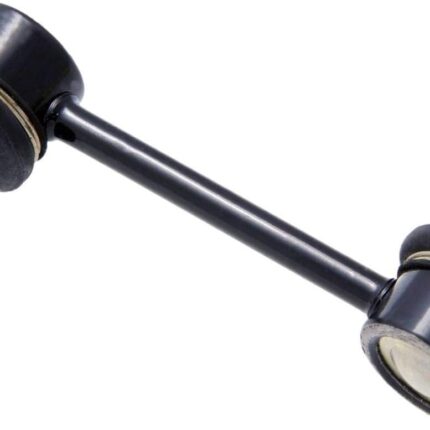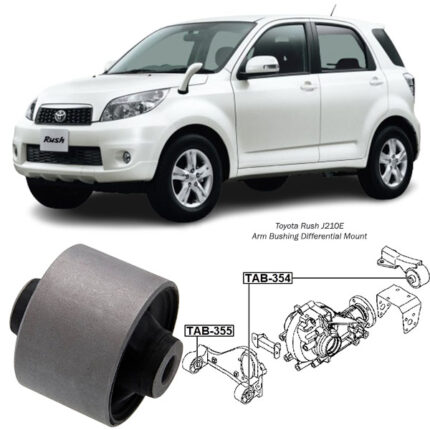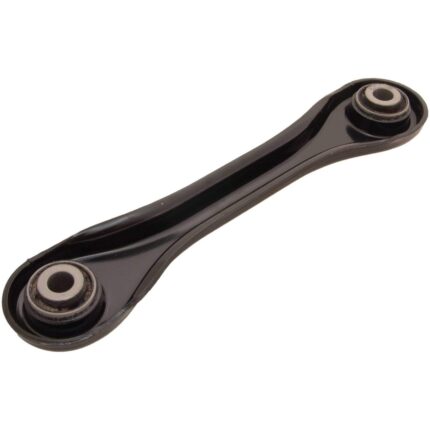Get Ford Mazda Volvo Rear Upper Transverse Rod
The transverse rod, also known as a sway bar or anti-roll bar, is an essential component of a vehicle’s suspension system. It plays a crucial role in enhancing stability, reducing body roll, and improving overall handling dynamics. Here’s an in-depth look at the transverse rod, its functions, and its significance in vehicle performance:
Functions of the Transverse Rod (Sway Bar)
- Body Roll Reduction
Primary Function: Minimize body roll during cornering and sharp maneuvers.
Details:
- Force Distribution: The sway bar connects the left and right sides of the suspension system. When the vehicle turns, it applies torsional force to both sides simultaneously, reducing body roll.
- Enhanced Stability: By limiting body roll, the sway bar enhances the vehicle’s stability and reduces the risk of rollover during aggressive driving or sudden maneuvers.
- Improving Handling Dynamics
Primary Function: Enhance overall handling and responsiveness.
Details:
- Reduced Understeer/Oversteer: Helps balance the vehicle’s handling characteristics by minimizing understeer (front-wheel slide) or oversteer (rear-wheel slide) tendencies.
- Improved Traction: Ensures that the tires maintain better contact with the road surface, improving grip and cornering performance.
- Enhancing Comfort and Control
Primary Function: Provide a smoother and more controlled ride.
Details:
- Absorbing Road Imperfections: The sway bar helps absorb and distribute forces from uneven road surfaces, reducing the impact felt by passengers.
- Reduced Noise and Vibration: Enhances ride comfort by minimizing noise and vibrations transmitted through the chassis.
- Supporting Weight Transfer
Primary Function: Manage weight transfer during braking and acceleration.
Details:
- Maintaining Balance: The sway bar helps maintain a balanced distribution of weight between the front and rear axles, optimizing braking and acceleration performance.
- Reduced Nose Dive and Body Squat: Limits excessive movement of the vehicle’s body, improving braking stability and acceleration traction.
Construction and Operation
- Design: Typically made from a solid or hollow metal bar (usually steel) with bushings at each end.
- Connection: Connected to the suspension arms or struts via end links, allowing the sway bar to pivot and twist in response to suspension movement.
- Flexibility: The sway bar flexes and twists to counteract the forces that cause body roll, enhancing vehicle stability and control.
Signs of Worn or Failing Sway Bar
- Increased Body Roll
Description: Noticeable increase in body lean or sway during turns.
Details:
- Ineffective Stabilization: Worn bushings or bar can’t effectively reduce body roll, leading to less stable handling.
- Handling Concerns: The vehicle may feel less responsive and more prone to sway or lean in corners.
- Clunking or Rattling Noises
Description: Unusual noises, such as clunking or rattling, especially when driving over bumps or uneven roads.
Details:
- Loose Connections: Worn or damaged sway bar bushings or end links can cause the sway bar to move excessively, creating noise.
- Metal-to-Metal Contact: If bushings wear out completely, metal-to-metal contact between components can occur, leading to noise.
- Uneven Tire Wear
Description: Abnormal or uneven wear patterns on the tires.
Details:
- Suspension Misalignment: A failing sway bar can contribute to suspension misalignment, affecting tire contact with the road.
- Handling Issues: Uneven tire wear can impact vehicle handling and safety.
- Steering Instability
Description: The vehicle feels less stable or wanders, especially at higher speeds.
Details:
- Reduced Control: Worn sway bar components can affect steering response and stability, particularly during sudden maneuvers or highway driving.
- Safety Concerns: Steering instability can compromise vehicle control and safety.
Maintenance and Replacement
- Regular Inspection: Periodically inspect the sway bar, bushings, and end links for signs of wear, damage, or corrosion.
- Lubrication: Some sway bar bushings may require periodic lubrication to maintain performance and reduce wear.
- Replacement: Replace worn or damaged sway bar bushings, end links, or the sway bar itself as needed to restore proper suspension function.
- Professional Service: Consider having a qualified mechanic perform the replacement, as it may require specialized tools and knowledge.
- Alignment Check: After replacing sway bar components, ensure proper wheel alignment to prevent premature wear and ensure optimal vehicle handling.
Follow us on Facebook for more parts.




